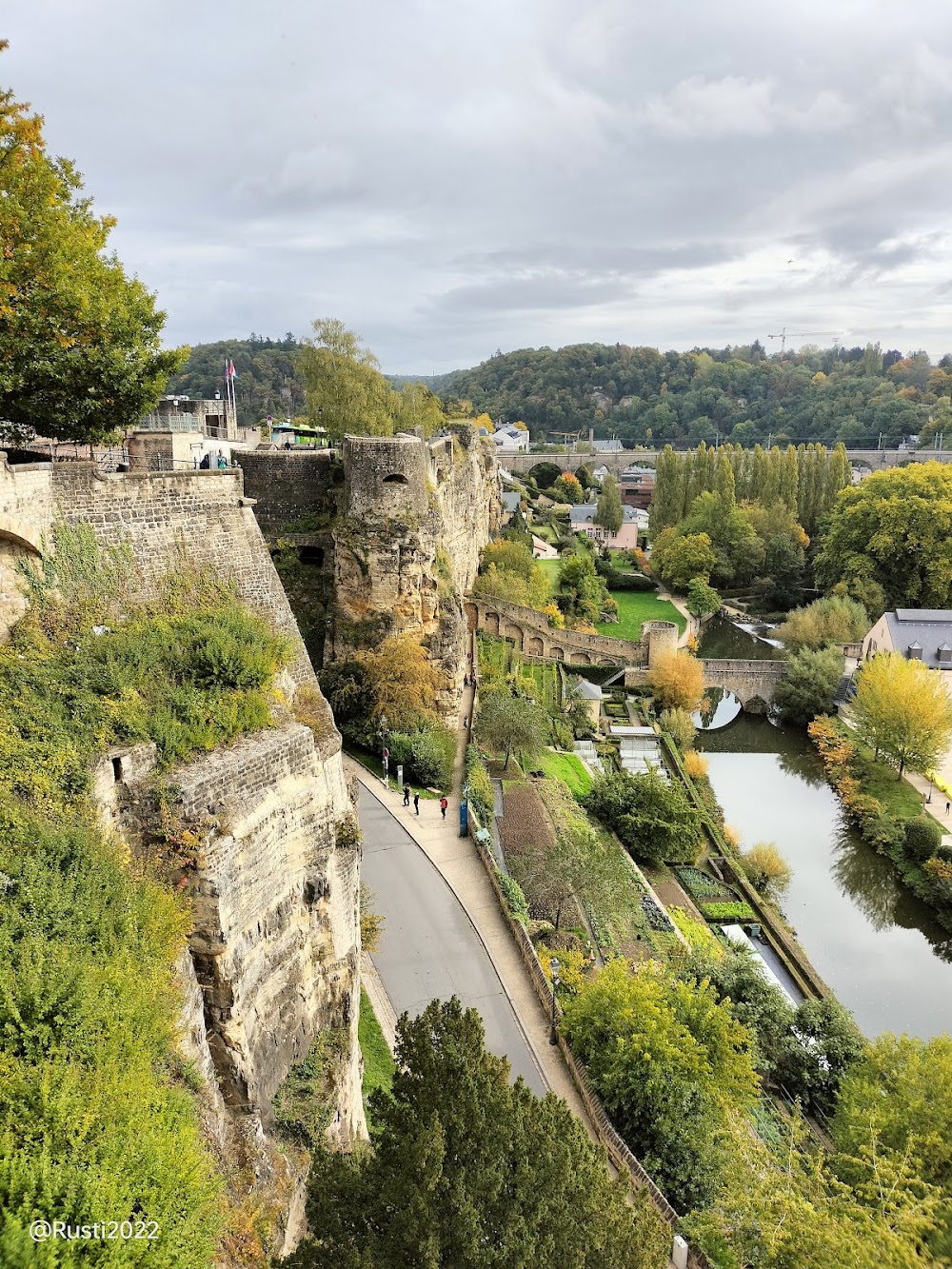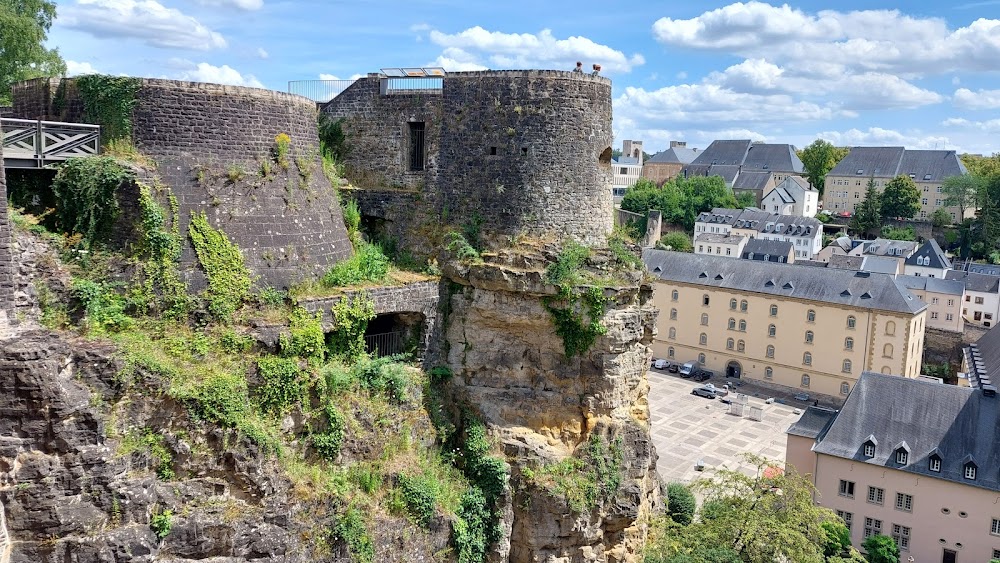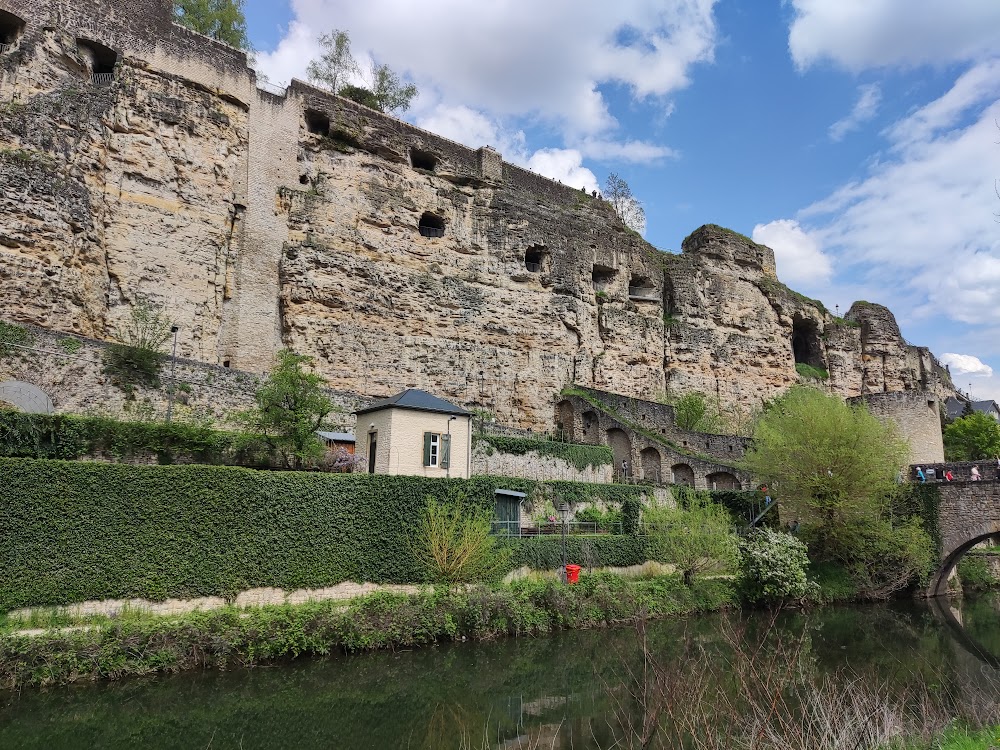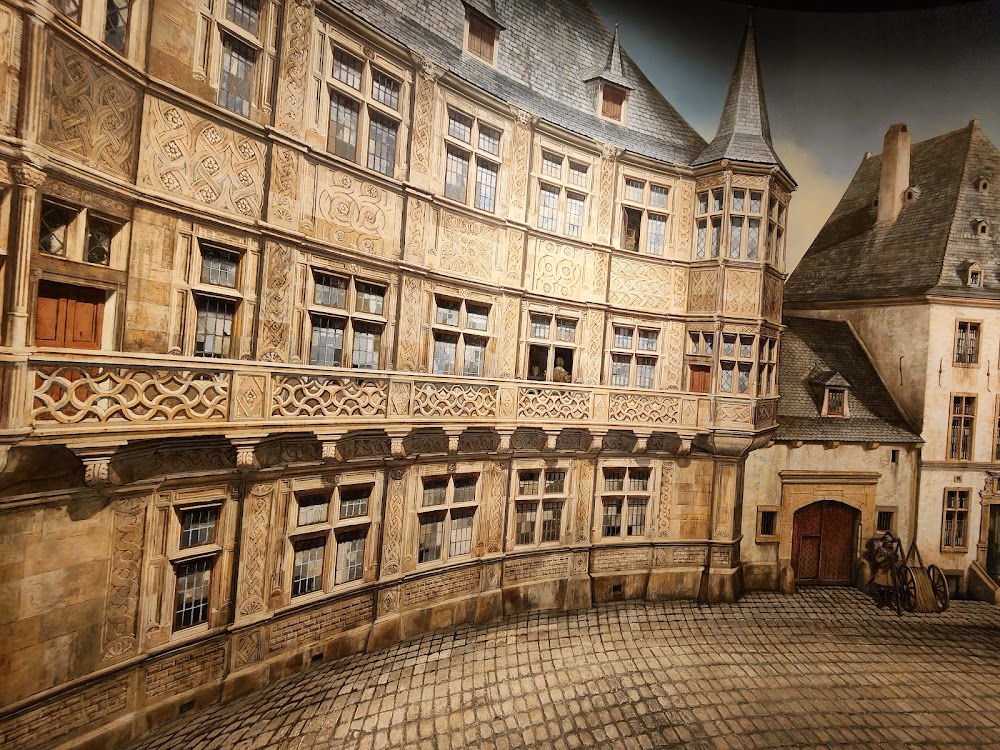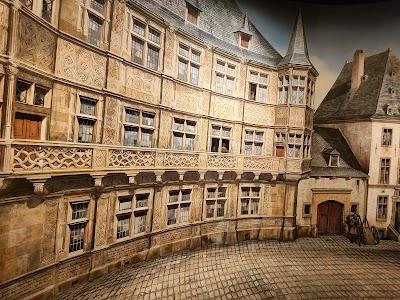Bock Casemates (Casemates du Bock)
Overview
The Bock Casemates are a fascinating network of underground tunnels and galleries nestled within a rocky promontory in Luxembourg City, the capital of the Grand Duchy of Luxembourg. Their storied history dates back to 963 AD, when Count Siegfried acquired the Bock promontory, recognizing its formidable natural defenses due to steep cliffs and its strategic vantage point overlooking the Alzette River. This acquisition marked the inception of Luxembourg City’s fortifications, setting the stage for centuries of military significance.
During the 17th century, the Governor of the Spanish Netherlands, Baron Johann von Beck, embarked on an ambitious project to enhance the city’s defenses. Under his leadership, the first casemates were constructed in 1644. These intricate fortifications were not merely protective structures; they were multifunctional military hubs designed to house soldiers, store arms, accommodate horses, and serve as refuge for civilians during sieges.
As the centuries progressed, the Bock Casemates underwent various modifications by different European powers, each contributing to their complexity. Under both Spanish and French rule, the fortifications were expanded and refined. Notably, the renowned military engineer Marshal Vauban further strengthened the casemates during a brief period of French control in the late 17th century, enhancing their defensive capabilities.
The 18th century marked the pinnacle of the Bock Casemates’ transformation under Austrian rule. The tunnels were extended to an impressive length of about 23 kilometers, reaching depths of up to 40 meters. This extensive network positioned Luxembourg as one of the strongest fortresses in Europe, earning it the moniker the "Gibraltar of the North."
However, the strategic significance of the Bock Casemates raised concerns among neighboring nations. Following the Treaty of London in 1867, which declared Luxembourg a neutral state, it was mandated that the fortifications be dismantled. The extensive demolition process began that year and continued until 1883. Remarkably, 17 kilometers of the tunnels were preserved, along with some underground defenses, thanks to their deep-rooted location within the rock.
The casemates remained largely neglected until the 20th century, when they began to gain recognition as a historical monument. During World War II, they served a crucial role as bomb shelters, providing refuge for up to 35,000 people amidst the turmoil.
Today, the Bock Casemates are designated as a UNESCO World Heritage site and are a must-visit attraction for tourists. Visitors can traverse the labyrinthine network of tunnels, marveling at the impressive engineering achievements of the past. Not only do the casemates offer insight into Luxembourg's military history, but they also present stunning views of the city and its picturesque surroundings. These tunnels stand as a powerful testament to the city's resilience and strategic significance throughout history, inviting all who explore them to connect with the rich tapestry of Luxembourg's past.


